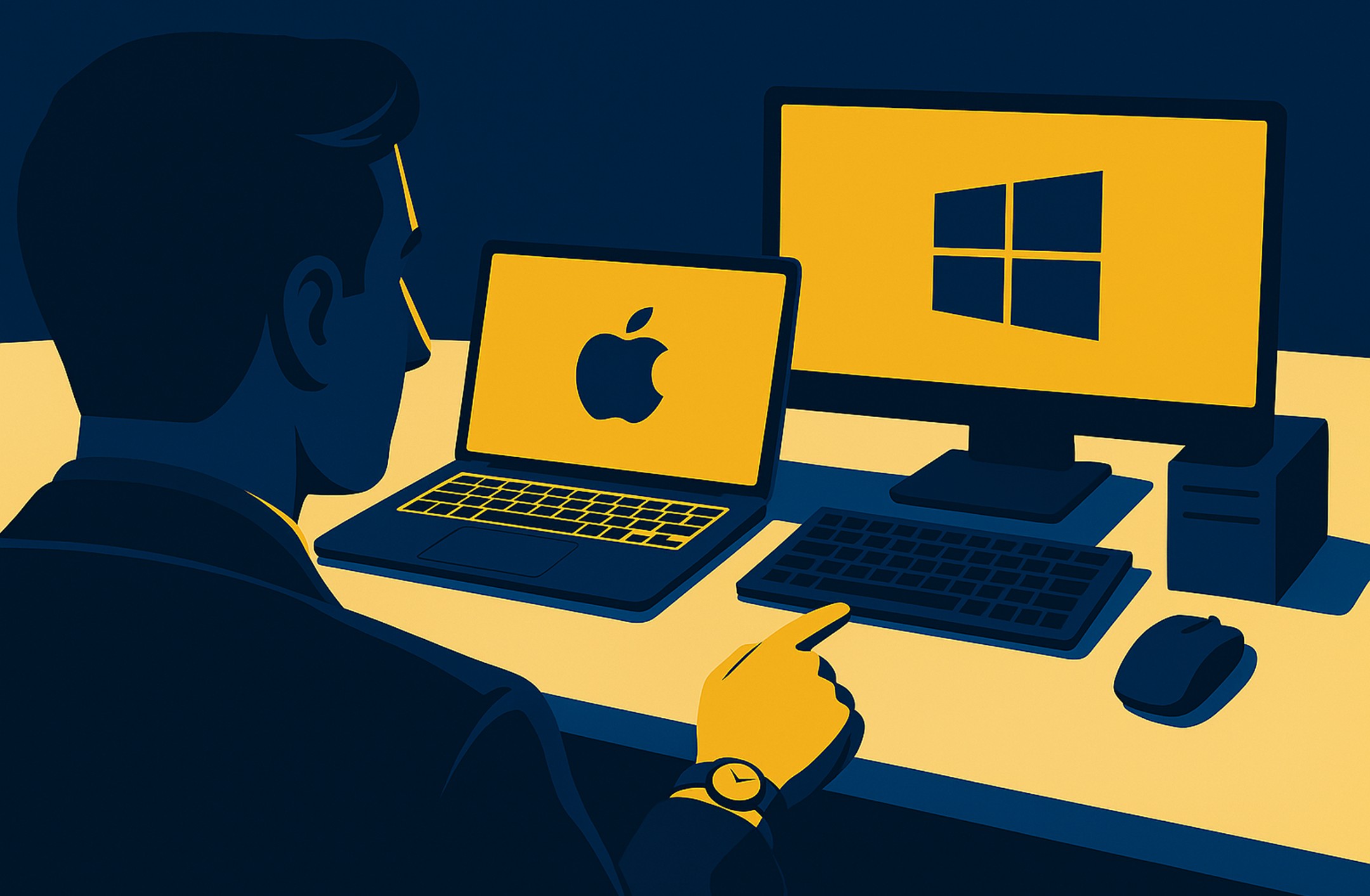Shawn Freeman
CEO

When SMBs are deciding which devices to use across their organization—Macs or PCs—it’s not just about brand preference. It’s about reliability, security, usability, and, most importantly, cost. And that cost isn’t just what you pay upfront—it’s the Total Cost of Ownership (TCO) over the lifecycle of the device.
This blog post breaks down the TCO of Macs vs. PCs for business use, covering everything from purchase price and IT support to security, lifespan, resale value, and productivity.
Whether you’re outfitting a small startup or standardizing your fleet for a growing organization, this guide will help you make a smart, fact-based decision—and it’s something you can share with stakeholders or revisit anytime your device policies come into question.
Total Cost of Ownership (TCO) includes not just the price of the hardware, but the ongoing costs associated with deploying, managing, securing, supporting, and replacing that hardware over time. For SMBs, TCO can significantly affect:
Looking only at the sticker price can mislead you. For example, while Macs typically cost more upfront than PCs, many businesses find they pay less over time when you account for support, downtime, and lifespan.
PCs, especially those running Windows, offer a wide range of models at different price points. You can buy a capable business laptop or desktop for significantly less than the average Mac.
If you’re equipping many employees at once, these upfront differences can add up quickly. However, initial cost is just the beginning.
While PCs may be cheaper at first, Macs tend to outlast them. With macOS tightly integrated into Apple’s hardware, performance stays reliable over time, and Macs are known for fewer slowdowns and longer usable lifespans.
Macs also typically retain higher resale value, which can be factored into TCO if you resell or repurpose devices.
Managing Windows-based PCs is usually more flexible and familiar to IT teams, especially in enterprise and Microsoft environments. PCs also support a wider variety of enterprise management and security tools.
However, Macs often require less hands-on IT support due to:
Recent data from IBM’s internal study showed Mac users were more productive and required fewer support tickets than PC users—saving IT resources and reducing downtime.
That said, PCs can be more customizable and easier to integrate with legacy systems, which is sometimes more cost-effective for mixed environments
Both macOS and Windows have made major strides in built-in security, but macOS still has a smaller attack surface.
That said, no system is immune, and cybersecurity risks should always be addressed regardless of the platform.
Your MSP can implement:
Ultimately, device security depends more on implementation than brand. Your MSP should ensure proper configuration, updates, antivirus, and user training regardless of platform.
PCs shine when it comes to compatibility. Most business apps are developed primarily for Windows, and industries like accounting, engineering, and manufacturing often require Windows-only software.
Macs work best in environments focused on:
Microsoft 365, Teams, Zoom, Slack, Google Workspace, and most productivity tools work on both platforms today—though Microsoft apps may have slightly more features or tighter integrations on Windows.
There’s growing recognition that letting employees choose their preferred platform can improve productivity, satisfaction, and even retention.
A report from Jamf found that 72% of employees who can choose between Mac and PC choose Mac, and those users report higher satisfaction and productivity.
Allowing choice can also reduce training needs and support requests, assuming proper onboarding is in place.
Modern businesses are moving toward zero-touch deployment, where devices are shipped to employees pre-configured with company apps, settings, and security.
If your MSP supports modern device management, both platforms can be deployed efficiently. However, the management stack required for Macmay add some licensing cost or require specialized expertise.
There’s no one-size-fits-all answer. The “better” platform depends on your business goals, industry, budget, and user needs. In many cases, a mixed environment—where employees use the right tool for their role—can offer the best of both worlds.
Your IT partner should help you evaluate this decision based on:
Looking for help making the right device strategy decision? Our guide to Empowering SMBs with Tailored IT Services shows how we help Calgary businesses choose tech that fits their operations.
Contact our team to get started with smarter hardware planning.
See exactly how your current IT setup measures up to our Hack Free standards. Enter your business email to receive: